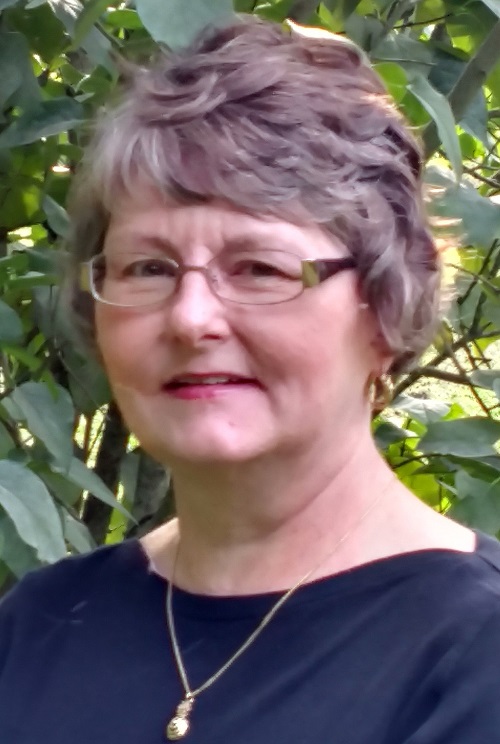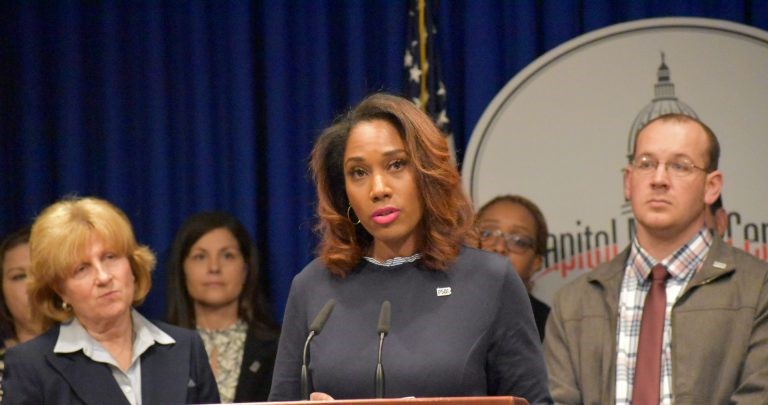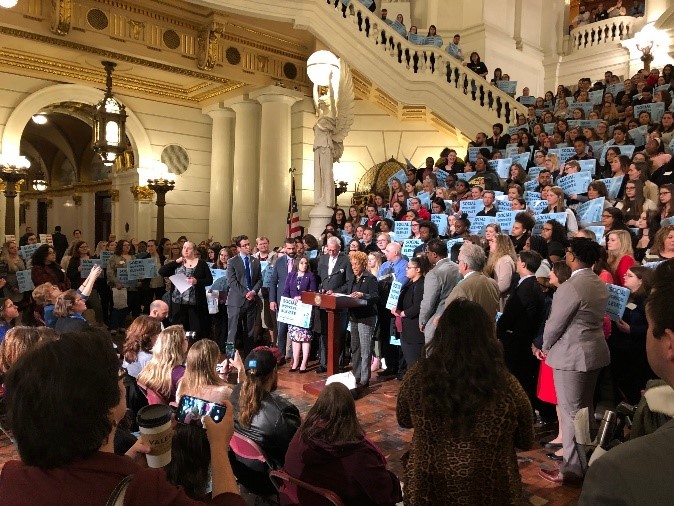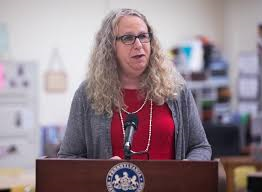Ginny Kelbish, DPS School Psychologist Section President
“80 percent of success is showing up.” - Woody Allen
Allen’s quote captures the importance of school attendance. Great teachers and a strong curriculum cannot be effective if children are not present for their school day. Because student attendance has been found to be important to academic achievement as well as long term career success, the Pennsylvania Department of Education is one of 36 states that selected chronic absenteeism to be a school quality indicator in the Consolidated Plan for implementing PA’s Every Student Succeeds Act.
More than 6.5 million children in the United States, approximately 13 percent of all students, miss 15 or more days of school each year (Allison & Attisha, 2019). Pennsylvania defines chronic absenteeism as the number of students in a school who miss more than 10 percent of school days across the academic year for any reason. This is estimated to be 18 days in a 180- day school year. A student is chronically absent if he or she misses as few as TWO days of school a month!
A student is absent if they are not physically participating in instruction or instruction-related activities on school grounds or at an approved off-grounds location for at least half of the school day. This includes excused and unexcused absences because in both cases instructional hours are lost. Any student enrolled for fewer than 60 days in a school will be excluded from the school’s chronic absenteeism rate. This is because there has not been a meaningful opportunity for the school to apply intervention strategies. Pennsylvania will be reporting on the regular attendance of each school district on its Future Ready Index.
If student absenteeism is addressed in a district, it is often done one student at a time with interventions tailored to one student and their family. This is not inappropriate, but schools need to think about attendance interventions through the multiple tiered systems of support (MTSS). Each school building should have interventions at the tier 1, 2, and 3 levels.
Absenteeism has varied causes and interventions need to consider the school and community systems that interact with families and students. To meaningfully think about absenteeism, educators should consider the demographics that describe the students, families, school, and community. We know that impoverished students, students who have unstable housing, students who have changed schools, students with parents in poor health, students who have chronic health issues, students with disabilities, and students of racial or ethnic minority status are at greater risk for chronic absenteeism. We know that the school climate and punitive disciplinary practices can negatively impact the relationship between students, families, and school staff. We know that safety issues in the school community and the relationship between the school and the community impacts school attendance.
Educators should not work alone in addressing chronic absenteeism, but rather create a diverse coalition of local stakeholders to work together to engage students who are chronically absent. “Models of coordinated community action to address and eliminate chronic absenteeism exist across the country, and each model is different; different communities make different choices about how to use time and resources. However, an element that defines success is the “coordination and collaboration among a diverse collection of local stakeholders.” (U.S. Departments of Justice, Health and Human Services, Housing and Urban Development, and Education, 2015). Representatives of education, health, housing, and justice-related agencies and organizations need to be at the table, alongside youth, families, local government, and community, faith-based, and philanthropic organizations.
In 2015, the Every Student, Every Day: A Community Toolkit to Address and Eliminate Chronic Absenteeism was released. www.ed.gov/chronicabsenteeism/toolkit.
The toolkit is organized around the following four action steps:
Action Step 1: Generate and act on absenteeism data.
What is the absentee rate in your district?
A school building can now go on the Future Reading Index to see the attendance rate for their school and district.
To improve attendance, districts must collect data on absenteeism and communicate that data to the important stakeholders. Many schools are challenged by collecting meaningful data on who is approaching the chronically absent mark. Student database systems can assist school districts in collecting the data, but districts still need to create a system to gather, track, and communicate data.
Action Step 2: Create and deploy positive messages and measures.
Organizations like Attendanceworks.org have handouts and posters on the importance of attendance that can be downloaded and hung in school offices and hallways.
Often, the first response to chronic absenteeism is to discipline the student with detention or the parent with fines. This may be appropriate if the student is truant. However, most of the professional recommendations encourage focusing on incentives for attendance and problem solving around the chronically absent student.
When Children and Youth and Juvenile Probation are involved, the school can work closely with them to improve a student’s attendance.
Action Step 3: Focus communities on addressing chronic absenteeism.
This month, the American Academy of Pediatrics (AAP) came out with a journal article in Pediatrics that linked school attendance to the long term social, emotional, behavioral, and physical health of children. The AAP wanted to bring attention to this issue because “chronic school absenteeism, starting as early as preschool and kindergarten, puts students at risk for poor school performance and school dropout, which in turn, put them at risk for unhealthy behaviors as adolescents and young adults as well as poor long- term health outcomes.” (Allison & Attisha, 2019) “Data strongly suggest that the long-term consequence of chronic absenteeism is a population that is less educated, less healthy, underemployed, less financially stable, and more disenfranchised.” (U.S. Departments of Justice, Health and Human Services, Housing and Urban Development, and Education, 2015).
The AAP makes the following recommendations.
Infection Prevention: Schools should encourage hand washing and the use of hand sanitizers. Parents should be encouraged to access flu shots and immunizations. However, AAP believes efforts should be made to make these resources available in family friendly community settings.
Importance of school nurses: One study found that 95 percent of students seen by a school nurse for illness or injury return to class with 82 percent of students seen by an unlicensed school employee.
Other studies have found that the presence of a full-time school nurses reduced the illness-related absenteeism among children with asthma in schools with part-time nurses.
School Based Health Centers (SBHC): The AAP articles cites research about how school- based health centers (SBHC) improve grade point averages, graduation rates, and attendance. “SBHC’s provide health services to students who otherwise may have been sent home or missed school because of illnesses and injuries or attending medical appointments for management of chronic health problems. School based health services can include preventative services, dental services, and mental or behavioral health services.” (Allison & Attisha, 2019)
School Based Mental Health Services and Trauma Informed Schools:
There is little research on how school based mental health services impact attendance. Having services in the school prevent students from the leaving the school for appointments. The hope is that addressing mental health needs improve student’s engagement in learning.
School Policies and Programs:
Creating a positive school climate through school programs, extracurricular activities, and community connections.
Parent Interventions:
Improving communication between parents and the school.
Informing parents about their child’s attendance and how quickly a child can be considered chronically absent.
Action Step 4: Ensure responsibility across sectors.
Keep the communication about the importance of attendance happening across all of the stakeholders. This means putting up posters encouraging attendance every year, not just one year. This means always working towards improving attendance each year, rather than making it a one- year initiative.
Resources for Parents
http://www.sam-inc.org/Services/services-advancing-school-attendance-program.html
www.sam-inc.org/pa/images/truancy-remediation-docs/Protocol.pdf
www.attendanceworks.org/resources/messaging/making-the-case/-This link has information about the importance of attendance for business leaders, health providers, religious leaders, and others. These can be distributed as informational fliers.
https://healthyschoolscampaign.org/here-healthy/ - Taking action to address health-related chronic absenteeism.
The following links are taken from, “The Link Between School Attendance and Good Health” written by Mandy A. Allison, Elliott Attisha, and the Council on School Health
Organizations Addressing School Attendance
Links to Resources to Share with Patients and Parents
Attendance Works Flyer


 Message from the president
Message from the president 





